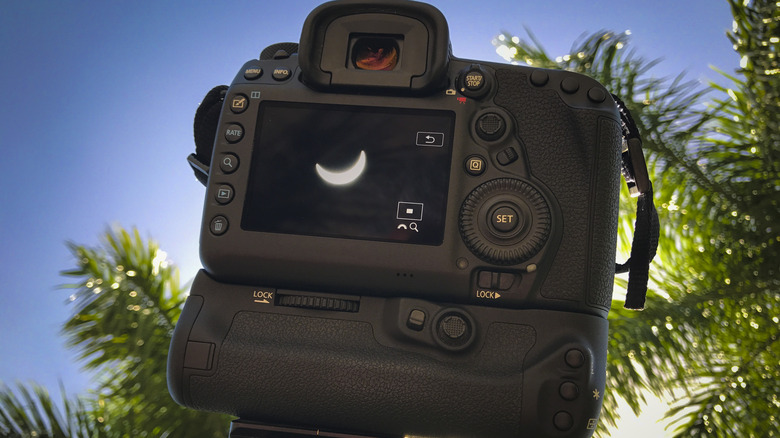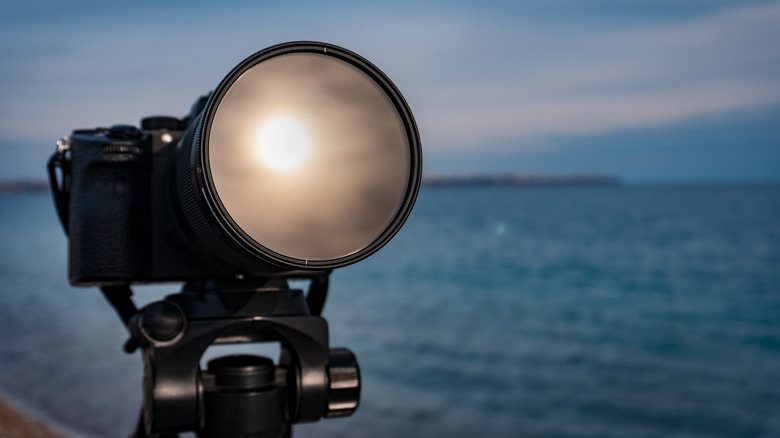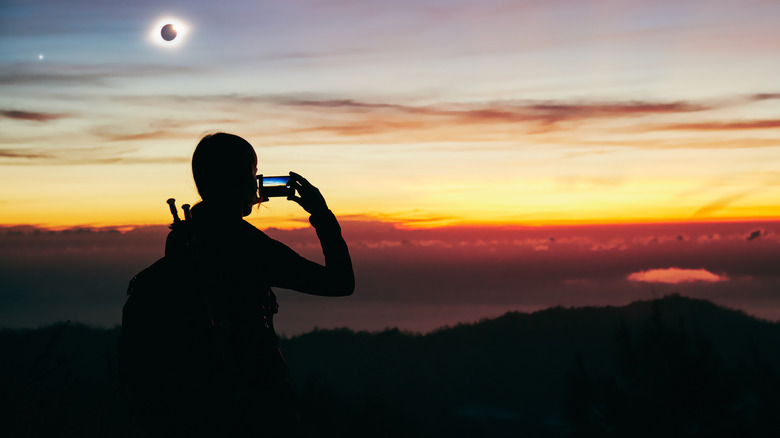How To Safely Photograph The Solar Eclipse
We are just days away from the 2024 total solar eclipse over North America. Many who get to see the solar eclipse will undoubtedly want to encapsulate the moment with a picture. The first and most important step in taking a picture of the spectacle is to snag a pair of solar eclipse glasses for yourself, as you never want to look directly into the sun without protection. Select Stores like Warby Parker offer free solar eclipse glasses. Experts, such as American astrophysicist Fred Espenak, say these must stay on during the partial phases. This includes when looking through a camera's optical viewfinder.
But beware—there are fake solar glasses. The American Astronomical Society (AAS) just last month issued a statement warning people that fake and counterfeit eclipse glasses had arrived on the market ahead of the April 8 eclipse. The AAS recommends buying your glasses from one of its reputable sellers to ensure you are getting a trusted pair of solar glasses. You can also test the glasses yourself to see if they are fake.
How to protect your camera
It is safe to take a picture of the eclipse if it is protected. We recommend using a solar filter to prevent the intense sunlight from damaging your camera. Depending on the type of camera, these can either be attached to a lens or replace a lens entirely. The American Astronomical Society (AAS) has stressed the need to ensure that the filter is securely on to keep it from unexpectedly falling off during the event and potentially damaging your camera or eyesight.
The lens can be removed during the total eclipse to obtain an unobstructed image of the spectacle. But, like with solar glasses, it must be put back on as soon as the sun peaks around the moon to prevent damage.
A solar filter isn't just photographers being overly cautious. After the eclipse of 2017, Lensrentals documented firsthand the damaging effects of not using a solar filter. It can result in lens iris damage, mirror damage, and melted sensors on cameras. These repairs can be costly, especially if you use a high-dollar DSLR or mirrorless camera, so it's better to be safe than sorry.
How to protect your smartphone
Not only photography enthusiasts can snag decent pictures of a solar eclipse. You can also take a photo of the eclipse with your phone. However, not everyone agrees that a solar filter is necessary. Many have argued that there wasn't much of a need for solar lenses for smartphones because smartphone lenses tended to be smaller than those found on traditional cameras. But smartphone lenses have gotten larger in recent years. So, in theory, the eclipse could fry your phone.
This is why NASA, ahead of the 2017 eclipse, recommended using a solar filter during a partial eclipse. These filters can snap to the outside of your phone using Velcro or other adhesives. You can also hold up a spare pair of your ISO-certified sun-viewing glasses in front of the camera lens to get the same effect. Some onlookers may attach a telephoto lens to their smartphone to get a more zoomed-in picture of the event. But this does not forgo the need for a solar filter.
Not only may a solar filter protect your phone, but it can also give you better images by eliminating sun blooming, giving you a clearer image of the event. When the total eclipse is occurring, you can take off the filter to take images without it.


